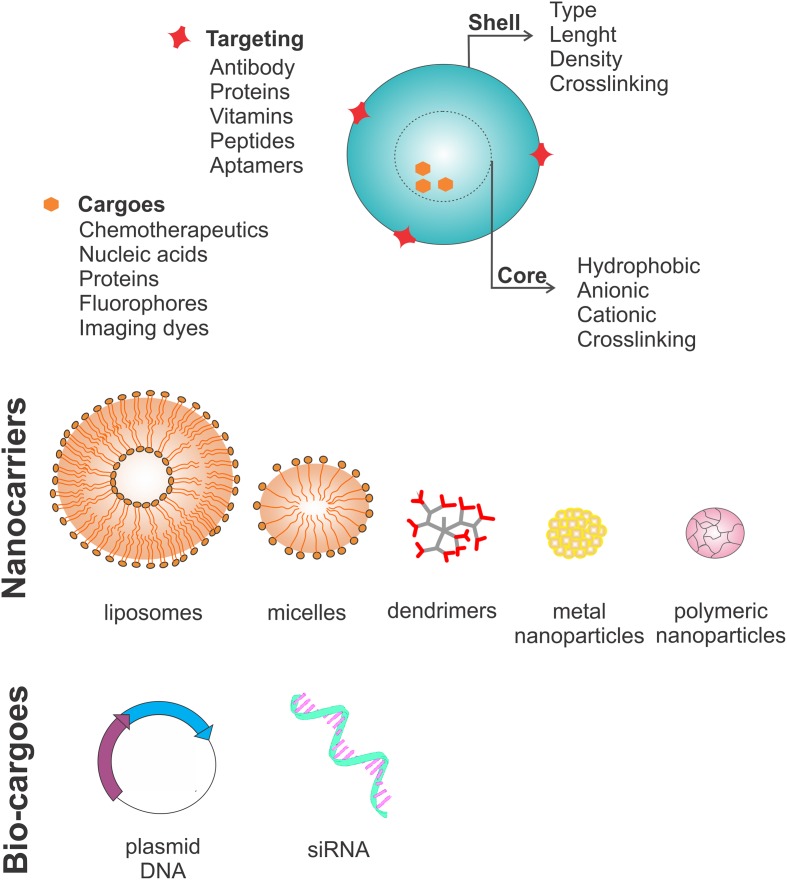FIGURE 2.
Nanocarrier characteristics. Nanocarriers have four main features: a shell that can vary in type, length, density and crosslinking molecules; a core, which can be hydrophobic, anionic or cationic depending on which crosslinked molecule needs to be carried; surface targeting molecules which can be antibodies, proteins, vitamins, peptides and aptamers; and lastly the cargo, which can be chemotherapeutics, nucleic acids, proteins, fluorophores or other imaging dyes. Usually nanocarriers are divided into five subtypes: liposomes (lipid bilayer structures), polymeric micelles (lipid monolayers), dendrimers (highly branched structures), and nanoparticles (organic or inorganic). Recently, new strategies have focused on carrying bio-cargoes, such as plasmids coding for proteins involved in programmed cell death or agents to silence the genes important for the cancer stem cell survival through genetic knockout using the CRISPR/CAS9 system or genetic knockdown using siRNAs.

